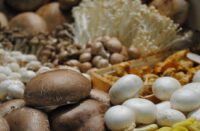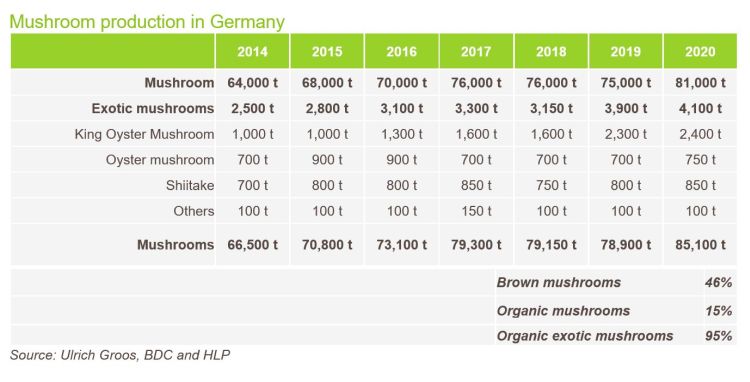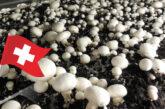The German Mushroom Association reported in a short article that despite the COVID, the mushroom growing sector was able to grow. Despite the fact that many industries have suffered significant losses over the past year due to the pandemic, the mushroom industry in Germany has not collapsed.
Quarantine and changes in our lives, our daily routines, have posed a serious challenge to European society, especially the guest workers in Germany. On the one hand, German mushroom growers may have been worried about the entry permits and travel opportunities of their workers, and on the other hand, the closure of restaurants also significantly reduced market demand. Despite the fact that German mushroom growers have indeed suffered particularly from these restrictions and their consequences, German mushroom production in 2020 reached 85,100 tonnes. This value is 6,200 tons higher than in 2019. The largest amount of mushrooms produced is white button mushrooms, of which 81,000 tons were grown. The proportion of white mushrooms is 54%, brown is 46% of the amount produced, and the proportion of brown mushrooms is constantly increasing. The amount of mushrooms grown on organic raw materials is similarly increasing, in 2020 already 15% of the total amount of mushrooms came from organic production.
In addition to champignons, 4,100 tons of other exotic mushrooms were produced in the country in 2020, of which 2,400 tons were king oyster mushrooms (Pleurotus eryngii), 750 tons of oyster mushrooms (Pleurotus sp.), 850 tons of shiitake and 100 tons of other exotic mushrooms. Other exotics include shimeji, nameko, pioppino, yellow and pink oyster mushroom varieties. The proportion of organic products within the exotic mushroom category is very significant, reaching 95%.
Germany has high per capita consumption figures due to successful consumer campaigns. The country is approx. Its 100 mushroom growers can produce about 60-65% of the amount of mushrooms consumed, the rest are imported mushrooms from neighboring countries, mainly Poland and the Netherlands. The big advantage of domestic production is the short supply chains, which are able to deliver freshly picked mushrooms to the table of German consumers within 24 hours.
Source: Pilzbau.de / Der Champignon













